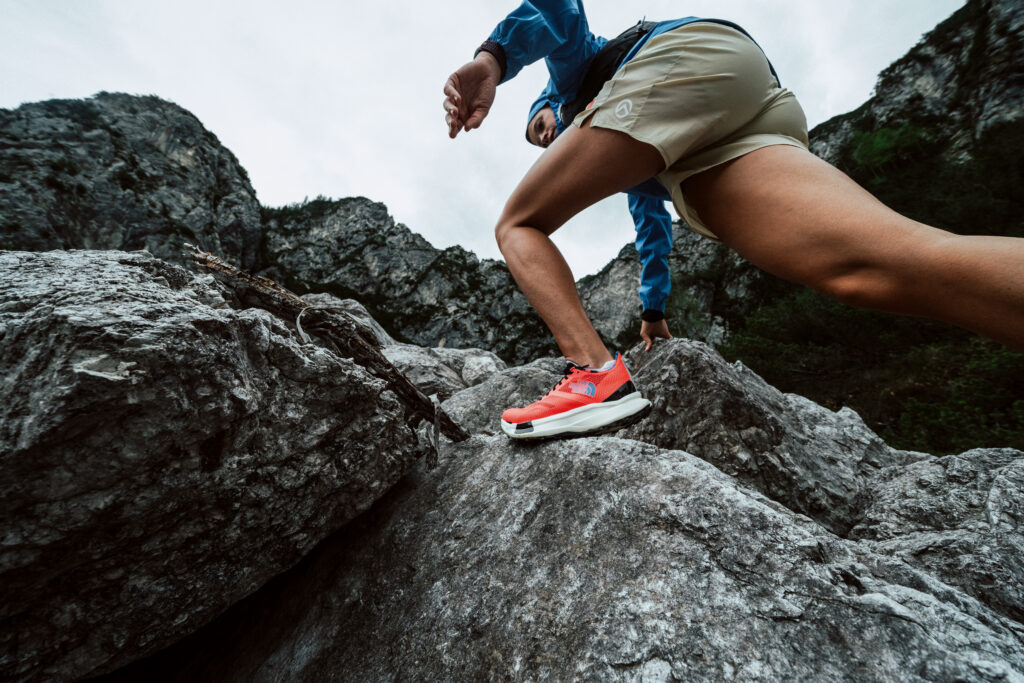For trail runners, one of the most exciting and challenging aspects of the sport is running in technical terrain. Trail running in rugged, rocky, or steep terrain adds another dimension to the experience, testing an ultra runner’s endurance and technical skills. However, technical terrain can also be dangerous and put runners at risk of injury.
Therefore, it’s essential to know what to look for in technical terrain when ultra trail running to ensure a safe and enjoyable experience. We explore some key factors to consider when navigating technical terrain.
Footing
Foot placement is critical when running in technical terrain. Look for secure and stable footing, as uneven or loose terrain could cause you to trip or slip. When running uphill in technical terrain, try to step on rocks or roots instead of loose dirt or gravel, which can be slippery.
When running downhill, look for areas with good traction, like switchbacks, or larger rocks that act as natural stepping-stones. Avoid landing on the ball of the foot and try to hit the ground on the full foot to remain stable on technical terrain.

Obstacles
Obstacles come in many forms in technical terrain. Rocks, roots, branches, or even water crossings can pose challenges to runners. Look ahead and scan the terrain to try and anticipate obstacles and mitigate potential risks. If you need to move around an obstacle, make sure to use appropriate footing and momentum to avoid losing your balance.
“You have to start with manageable challenges. If you view the race as the actual 106-mile, 35,000-vertical-foot behemoth that it is, you will cry yourself to sleep. But if you break the event into bite-sized palatable pieces, such as ‘I just need to find my crew in Saint-Gervais before nightfall’, then you can begin tackling the massive journey, section by section.”
Tim Tollefson on the UTMB Mont Blanc (Red Bull)
Steepness
Technical terrain is often steep, whether uphill or downhill. When running uphill in technical terrain, try to use short steps to maintain control and conserve energy. You may also need to adjust your pace and power output, as steep inclines require more effort. When running downhill, try to control your speed by leaning back slightly and using your feet as brakes. Take short strides, stay balanced, stay relaxed, avoid locking your knees, and always keep your arms out for balance.
Trail Markings
Some sections of technical terrain might be challenging or even potentially dangerous. Always try to check out any trail markings or warning signs before venturing into technical terrain. At some point during the trail, technical sections may include a sign or trail marking for hikers or riders. If you feel uneasy about running through a technical section or are unsure of what lays ahead, always err on the side of caution.
“When I prepare for the UTMB, I have the entire route in my mind. I see the profile, I think I will do this part in the night, the weather can be hot/cold here, there’s an aid station here. It means I can be more prepared, which makes it easier. Even though you know it will be difficult.”
Sébastien Camus on UTMB Mont Blanc (Red Bull)
Weather
Weather is another factor that can impact technical trail running. Cold, windy, or wet weather conditions can affect your performance and make technical terrain more challenging. If you are running in wet conditions, try to maintain traction by avoiding muddy areas and using rocks or roots instead. If you’re running in colder weather, dress in layers to stay warm but don’t over-layer as sweating can cause dehydration.
Technical terrain requires runners to use a combination of technical skills, endurance, and strength.
Understanding what to look for in technical terrain can help you stay safe and enjoy the experience. By paying attention to your footing, anticipating obstacles, and adjusting your pace and power output, you can navigate even the most challenging technical terrain. With the right preparation and mindset, technical terrain can take your Ultra trail running experience to the next level!